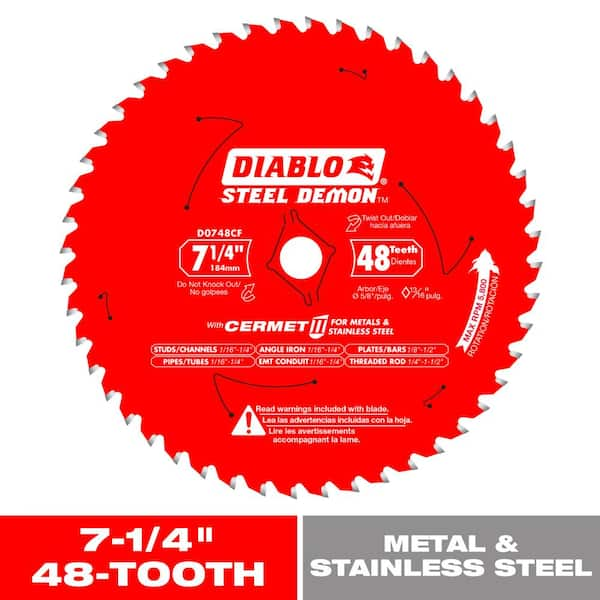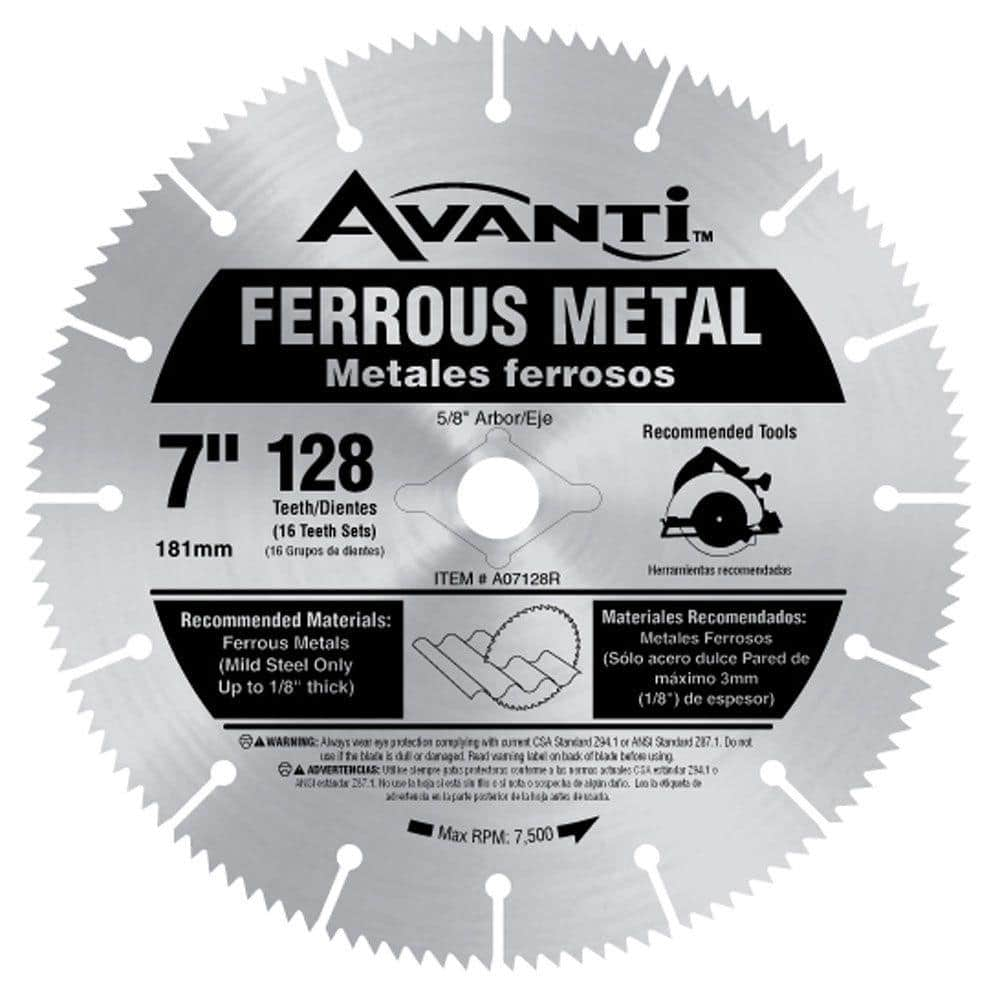If you’ve ever wondered what kind of steel is used in circular saw blades, you’re in the right place! Let’s dive into the fascinating world of saw blades and find out what makes them so sharp and durable.
When it comes to saw blades, steel is the star of the show. But not just any steel will do. Saw blades are typically made from high-speed steel or carbide-tipped steel, which give them the strength and toughness they need to cut through all sorts of materials with ease.
High-speed steel, or HSS for short, is a type of steel that can handle the high temperatures generated by the cutting process. On the other hand, carbide-tipped steel blades feature a carbide cutting edge, which is incredibly hard and can stay sharp for a long time.
So, whether you’re cutting wood, metal, or even plastic, the steel in circular saw blades is carefully chosen to provide the best performance and longevity. Now that we know what kind of steel is used, let’s uncover even more interesting details about saw blades!

What Kind of Steel Is Used in Circular Saw Blades?
When it comes to circular saw blades, the type of steel used plays a crucial role in determining its performance, durability, and cutting ability. Steel is chosen for its strength, hardness, and ability to retain its shape under high heat and pressure. In this article, we will delve into the different types of steel used in circular saw blades, their unique properties, and how they impact the cutting performance of these essential tools.
The Importance of Steel Selection
Steel selection is a critical factor in determining the quality and performance of circular saw blades. Different types of steel offer varying levels of hardness, strength, and wear resistance. In the manufacturing process, selecting the right steel can significantly enhance the blade’s ability to withstand the demanding cutting conditions it may encounter. Let’s explore some commonly used steels in circular saw blades and their characteristics:
1. High-Speed Steel (HSS)
High-speed steel (HSS) is a popular choice for circular saw blades due to its exceptional hardness and heat resistance. It can maintain its cutting edge even at high temperatures, making it suitable for cutting tough materials like hardwood, metal, and plastic. HSS circular saw blades are known for their longevity and ability to retain sharpness for a prolonged period. The high-speed steel’s alloying elements, such as tungsten, molybdenum, and chromium, contribute to its toughness and wear resistance.
2. Carbide-Tipped Steel
Carbide-tipped steel blades are widely used for heavy-duty cutting applications. These blades feature teeth with small inserts of tungsten carbide. The tungsten carbide inserts provide exceptional hardness and heat resistance, allowing the blade to cut through materials like concrete, stone, and metal. Carbide-tipped blades are known for their long lifespan and ability to retain their sharpness, even when subjected to intense cutting tasks. However, due to the high cost of tungsten carbide, these blades are typically more expensive compared to other types.
Selecting the Right Steel for Your Needs
When choosing a circular saw blade, it is important to consider your specific cutting needs and materials. Different steel types offer distinct advantages and characteristics that may be more suitable for certain applications. Here are some factors to consider when selecting the right steel for your circular saw blade:
1. Material Type
The type of material you intend to cut plays a crucial role in determining the appropriate steel for your circular saw blade. For cutting wood or plastics, high-speed steel blades offer excellent performance and durability. However, for cutting heavy metals or abrasive materials, carbide-tipped blades are recommended due to their superior hardness and wear resistance.
2. Cutting Speed
If you require faster cutting speeds, high-speed steel blades are the best choice. These blades can handle high rotational speeds without compromising performance. On the other hand, carbide-tipped blades are better suited for slower cutting speeds due to their higher density and increased cutting force requirements.
3. Cost
Consider your budget when selecting a circular saw blade. High-speed steel blades generally offer a more cost-effective option for general-purpose cutting needs. However, if you require extended blade life and superior cutting performance, investing in a carbide-tipped blade may be a worthwhile long-term investment.
4. Maintenance
Another factor to consider is blade maintenance. High-speed steel blades are relatively easy to sharpen and maintain, making them a convenient choice for DIY enthusiasts. Carbide-tipped blades, on the other hand, require specialized sharpening equipment or professional services, adding to the overall maintenance cost.
Take Care of Your Circular Saw Blade
Regardless of the type of steel used in your circular saw blade, proper care and maintenance are essential to maximize its lifespan and cutting performance. Here are a few tips to keep your blade in top shape:
1. Clean After Use
Remove any debris or residue from the blade after each use. Use a brush or compressed air to clean sawdust, dirt, or other material buildup. This helps prevent corrosion and ensures smooth cutting performance.
2. Store Properly
Store your circular saw blade in a clean and dry environment, ideally in a blade case or sleeve. This protects the blade from moisture, humidity, and any potential damage that could affect its performance.
3. Sharpen When Necessary
Regularly check the blade for signs of dullness, such as reduced cutting speed or difficulty in making clean cuts. If needed, follow manufacturer guidelines to sharpen the blade or seek professional sharpening services for carbide-tipped blades.
4. Follow Proper Cutting Techniques
When using a circular saw blade, ensure proper cutting techniques to minimize stress and wear on the blade. Always follow the manufacturer’s recommendations for blade usage, cutting speed, and feed rate to avoid overheating or damaging the blade.
In conclusion, the type of steel used in circular saw blades significantly affects their performance, durability, and cutting ability. High-speed steel and carbide-tipped steel are commonly used for their excellent hardness, heat resistance, and wear resistance. Choosing the right steel for your specific cutting needs and materials is crucial to achieve optimal results. Remember to maintain and care for your circular saw blade properly to prolong its lifespan and maintain its cutting performance. By selecting the right blade and following proper maintenance techniques, you can ensure efficient and precise cutting for your projects.
Key Takeaways: What Kind of Steel is Used in Circular Saw Blades?
- Circular saw blades are typically made from high-speed steel (HSS) or carbide-tipped steel.
- HSS is a type of tool steel that offers excellent cutting performance and durability.
- Carbide-tipped steel blades are even more durable and suitable for cutting harder materials like metal and hardwood.
- The steel used in circular saw blades is carefully heat-treated to enhance its hardness and sharpness.
- Choosing the right type of steel for your circular saw blades depends on the material you’ll be cutting and your specific needs.
Frequently Asked Questions
Welcome to our Frequently Asked Questions page on the topic of the steel used in circular saw blades. Here, we’ll answer some common questions related to this topic to help you understand more about the materials that make up these essential tools. Read on to find out more!
Q1: How does the selection of steel impact the performance of a circular saw blade?
The type of steel used in a circular saw blade plays a crucial role in its overall performance. Different types of steel have varying characteristics, such as hardness, toughness, and wear resistance. This affects how the blade cuts through different materials, the durability of the blade, and its ability to retain sharpness over time.
For example, high-speed steel (HSS) blades are known for their ability to withstand heat from friction during cutting, making them ideal for cutting through metal and hard materials. Carbide-tipped blades, on the other hand, feature small carbide teeth that are extremely hard and can cut through tough materials like hardwood and laminate with ease. The selection of steel determines the blade’s suitability for specific cutting tasks.
Q2: What is the most commonly used steel for circular saw blades?
The most commonly used steel for circular saw blades is known as high-speed steel (HSS). This type of steel contains a combination of elements, including tungsten, molybdenum, and chromium, which significantly enhance its hardness, durability, and heat resistance.
HSS is an excellent choice for general-purpose cutting tasks and is widely used due to its versatility and affordability. It can cut through wood, plastic, and even some metal materials effectively. However, for more specialized applications or cutting through tougher materials, other types of steel or carbide-tipped blades are often preferred.
Q3: What are the advantages of using carbide-tipped steel in circular saw blades?
Carbide-tipped steel is a popular choice for circular saw blades due to its exceptional hardness and durability. The tips of the blade teeth are embedded with small carbide inserts, which are much harder than most other steels.
These carbide teeth can withstand heavy use and cutting through tough materials like hardwood, laminate, and non-ferrous metals. The hardness of the carbide also means the blade maintains its sharpness for a longer period, reducing the need for frequent sharpening or replacement.
Q4: Are there any specific types of steel for cutting through metal with circular saw blades?
Yes, when it comes to cutting through metal, circular saw blades made from high-speed steel (HSS) or specially formulated steel such as “cold-work” steel are commonly used. HSS blades offer excellent heat resistance and can efficiently cut through various types of metal, including steel and aluminum.
Cold-work steel blades, on the other hand, are designed specifically for cutting through hardened metals, such as stainless steel or hardened tool steel. These blades are extremely hard and can withstand the high friction and heat generated during cutting operations on such tough materials.
Q5: Can circular saw blades be sharpened or should they be replaced?
Circular saw blades can be sharpened multiple times if they become dull. The number of times a blade can be sharpened depends on the type and quality of the steel used. For example, carbide-tipped blades tend to have a longer lifespan and can be sharpened more times compared to regular steel blades.
However, there comes a point when a blade’s teeth wear down or become damaged to a degree where sharpening is no longer effective. In such cases, it is advisable to replace the blade to ensure optimal performance and safety during cutting operations. Regular maintenance and proper handling of the blades can help extend their lifespan and reduce the frequency of replacements.

Summary
Circular saw blades are made from different types of steel depending on their purpose. For general woodworking, blades are usually made from high-speed steel (HSS) or carbide tipped steel. HSS is durable and can withstand high temperatures, while carbide tipped steel is even stronger and lasts longer. For cutting metal, blades are made from high-speed steel or high-speed steel with added cobalt for extra toughness. It’s important to choose the right type of steel for the job to ensure the best performance and longevity of the blade.
